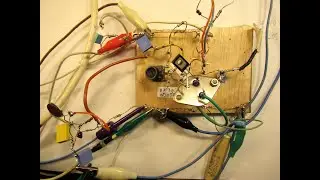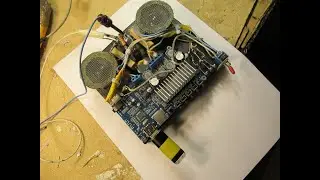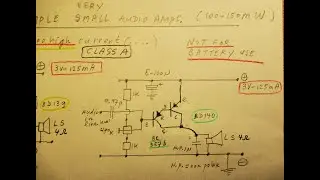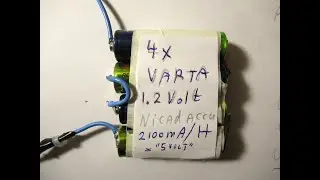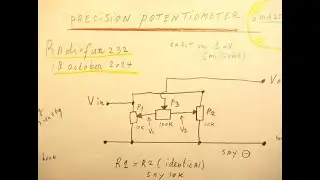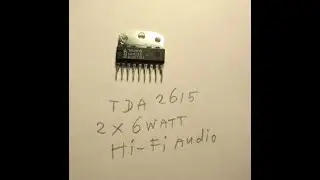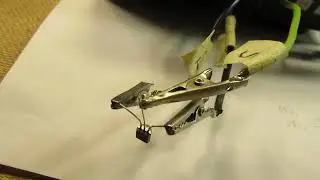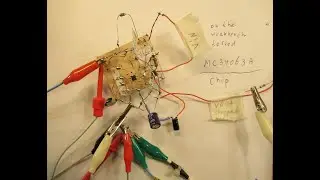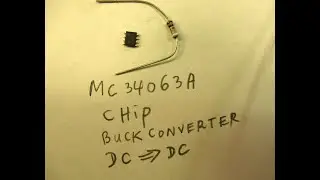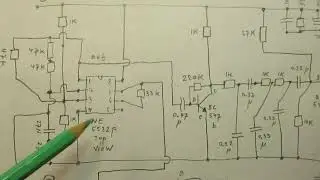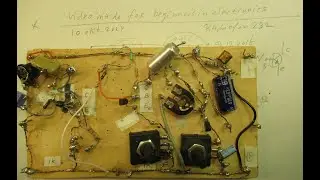Change a 500 uA meter into a 1 Amp. or even 10 Amp. meter with a shunt, say a piece of copper wire
Please read the description/textbox first. How to change a 500 uA meter into a meter that is suitable to measure 1 Ampère or even 10 Ampère with the help of a “shunt” resistor. IMPORTANT: shortcut the 50 uA or 100 uA or 500 uA meter with an insulated copper wire of 80 cm (copper core inside say 0.3 mm) first to get to a situation where that extremely sensitive Micro Ampère voltmeter does not burn out immediately, when experimenting to find the right shunt resistor to make the pointer move to position "X" at current "Y".
In many cases that shunt resistor can be simply made with an insulated copper wire between 1 meters and 20 centimeters. The fierce current flows through that (say) 20 cm wire, a tiny current flows through the 500 Micro Ampère meter with its internal resistance (normally) in the 1000 Ohms to 1600 Ohms range (the currents divide/spread over the 2 resistors).
The tiny current moves the pointer of the 500 uA meter to position "x", the big bunch of current (1-10 Amp) flows through the shunt.
By the way: the 0-30 Volt at max 1 Amp low hum & say free of ripple DC power supply to which I refer (where I have used this shunt, video 28 August 2022) is here • Easy extremely low ripple Variable Vo...
IMPORTANT: do NOT burn that 500 uA meter immediately out when searching for the right shunt resistor: solder a copper wire (for the type of wire: watch the video) of 1 meter or 50 centimeter parallel to the 500 uA meter electrodes, before doing this experiment (calibrating). I did that also in this video. If not: the current when testing can ruin your beautiful & sensitive & perhaps expensive 500 uA meter.
A shunt resistor is often in the 0,01 to 0,001 Ohms range, it cannot be measured with hobby Ohms meters.
But in electronics practice it is simple: shortcut the 500 uA meter with a piece of copper wire (start with say 1 meter) and read the pointer/scale, while looking at the same time to a calibrated 10 Ampère meter that is in series with the meter that has to be calibrated. On 10 Ampère applications: be aware that the shunt can get hot or warm, it must be ventilated or made with unflammable isolation materials.
Change the length of the shortcut wire (2 meter-20 cm) to bring the latter meter into the range and thus the pointer move to the right Ampère indication.
BIG FLAW in this video: on 8.06-8.14 I say “that means that we have to make the shunt wire shorter”. Of course that is not correct. We must make the shortcut wire (shunt resistor) longer (= a higher resistance in the 0,01 to 0,001 Ohms range) to get a higher voltage drop parallel to the Micro Ampère meter (500 uA).
Namely the effect of a higher voltage drop is that the pointer of the 500 uA meter moves more forward, indicating the right current, compared to the current that we read on the calibrated Ampère meter that is in series in the circuit where the current flows.
Sorry for that. I leave the video "as it is" because the flaw is somewhat compensated by the explanation in the rest of this video.
And I think the principles of the shunt resistor are enough explained in this video and clear for everyone (electronics hobbyists/profs) knowing and understanding Ohms Law (U=I x R). That law reigns in this circuit.
Please note (DISCLAIMER): a shunt resistor can get hot or very hot. In extreme cases start to smoke or cause fire. The solution showed here does NOT (!) refer to shunt resistors in automotive applications or high power applications (say electric cars or so) where there are currents in the 100 Ampère to even 600 Ampère or more range.
The simple solution showed in this video (using a 500 uA meter to indicate in the 1 Amp. to 10 Amp. range) cannot work there, due to the enormous (!!) DC currents in automotive and high power DC circuits/automotive or other DC technologies/electronics. This is clear, I think, for everyone understanding something of the electronics/electrical basics.
My You Tube channel trailer is here: • Radiofun232 on YouTube (updated monthly) When you search, search always “NEWEST FIRST” to get the right overview. You can also search via the “looking glass” on my Channel trailer via keywords like ”audio”, “radio”, “amplifier”, “filter”, “Shortwave”, “transistor”, “FET”, “oscillator”, “generator”, “switch”, “schmitt trigger” etc; so the electronic subject you are interested in.
My books about electronics & analog radio technology are available via the website of "LULU”, search for author “Ko Tilman” there.
https://www.lulu.com/search?adult_aud...
I keep all my YT videos constant actual, so the original video’s with the most recent information are always on YouTube. Search there, and avoid my circuits that are republished, re-arranged, re-edited on other websites, giving not probable re-wiring, etc.
Some persons try to find gold via my circuits. I take distance from all these fake claims. I cannot help that these things happen. Upload 27 August 2022.








